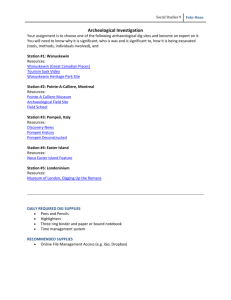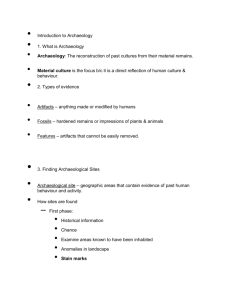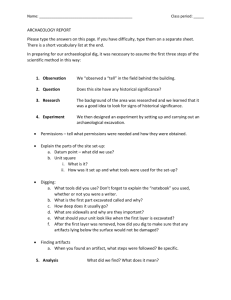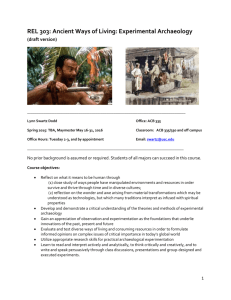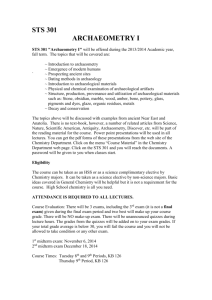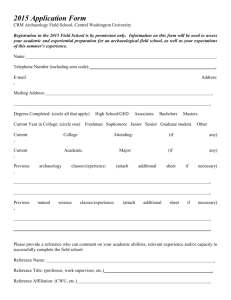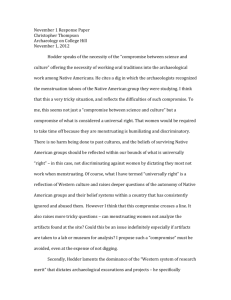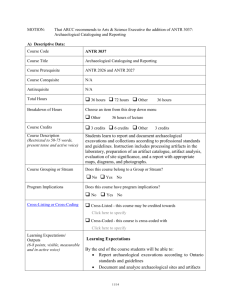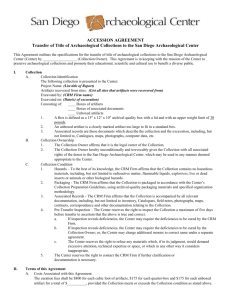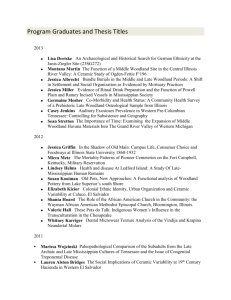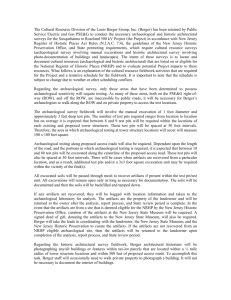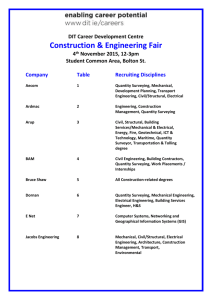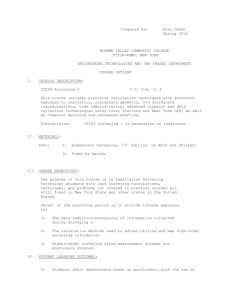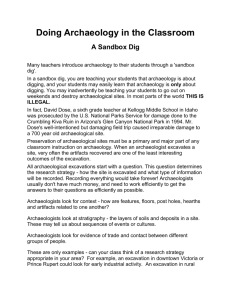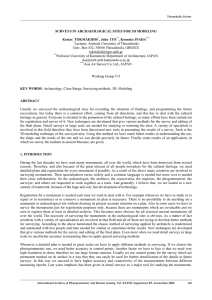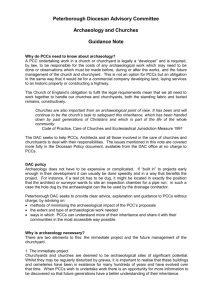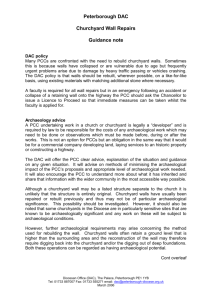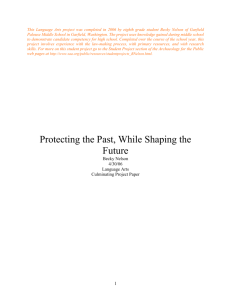here
advertisement
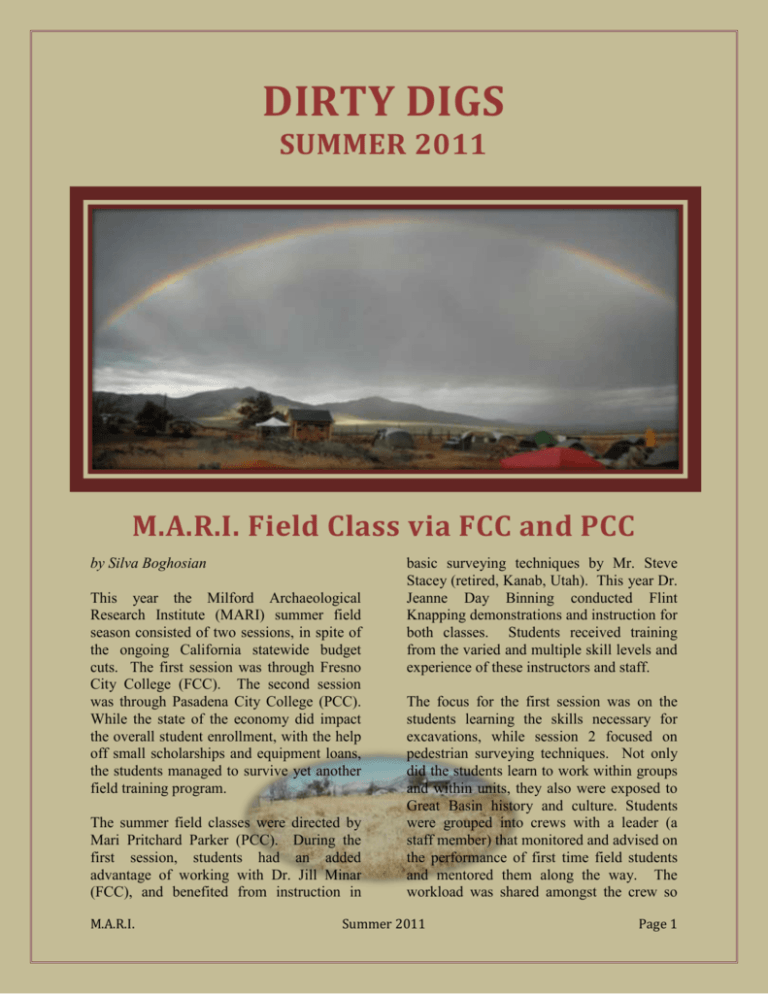
DIRTY DIGS SUMMER 2011 M.A.R.I. Field Class via FCC and PCC by Silva Boghosian This year the Milford Archaeological Research Institute (MARI) summer field season consisted of two sessions, in spite of the ongoing California statewide budget cuts. The first session was through Fresno City College (FCC). The second session was through Pasadena City College (PCC). While the state of the economy did impact the overall student enrollment, with the help off small scholarships and equipment loans, the students managed to survive yet another field training program. The summer field classes were directed by Mari Pritchard Parker (PCC). During the first session, students had an added advantage of working with Dr. Jill Minar (FCC), and benefited from instruction in M.A.R.I. basic surveying techniques by Mr. Steve Stacey (retired, Kanab, Utah). This year Dr. Jeanne Day Binning conducted Flint Knapping demonstrations and instruction for both classes. Students received training from the varied and multiple skill levels and experience of these instructors and staff. The focus for the first session was on the students learning the skills necessary for excavations, while session 2 focused on pedestrian surveying techniques. Not only did the students learn to work within groups and within units, they also were exposed to Great Basin history and culture. Students were grouped into crews with a leader (a staff member) that monitored and advised on the performance of first time field students and mentored them along the way. The workload was shared amongst the crew so Summer 2011 Page 1 everyone had an opportunity to experience multiple activities that jobs in Archaeology involve. Tentative schedules allowed students the ability to plan in advance their daily chores and activities. While group leaders and staff made sure that the students’ safety always came first, the daily unit chores ensured a cleaner public area. The first day started the students off very slow. This gave instructors, staff, and students a couple of hours to get down to the basics. Students mingled, set up tents, and adjusted to the elevation of 5,000 feet before their first field trip. The days thereafter, students engaged in hard physical work and hands-on priceless experience. Lab work and journal keeping made the archaeological process of record keeping, artifact collecting, and data entry real, to the finest details. During the first session students visited the Fremont Museum, Southern Utah University’s Archaeological Repository, the petroglyph’s of Parowan Gap, the Frisco ghost town, obsidian quarries, and last but not least Lehman Caves (Great Basin National Park); all the while working on their units, excavating, screening, and record keeping. During the second session, students concluded the excavations and back-filled their units, eager to work on something new. Students received a special treat this year as they traveled to Delta for two days to work on site recordation at the Topaz Mountain Internment Camp, which provided a wealth of experience for the students. Students surface surveyed, collected artifacts, and analyzed artifacts in the Topaz Mountain collection. The surveying experience M.A.R.I. continued back at Milford with Cedar City’s Bureau of Land Management (BLM). Students and staff worked side-by-side for three days in the Mineral Mountains where they practiced pedestrian surveying in search of artifacts (i.e.: pottery). Students experienced work as an archaeologist along with learning to tolerate nature and its cohabitants (i.e. snakes and swarms of locusts). The field trips and field work provided the students with indispensable learning, not to mention first-hand experience. While field trips and field work provided students with great visuals on artifacts and tools, during the day, Mr. Steve Stacey worked one-onone with students, providing them with the know-how to map and grid an archaeological site. Such know-how entailed measurements, surveying, field note-taking, site responsibility, and reading of the stadia rods. By night, Dr. Binning provided the students with resources needed to analyze debitage. Students received firstrate theory and practical training in Flint Knapping and Lithic Technology. The summer field class really put things into perspective, which allowed individuals to have a real world, first-hand experience. Archaeology might not be for everyone, but during these field sessions, students had the opportunity to contemplate their future and set some academic goals for themselves. If you love primitive camping, beautiful scenic mountains, rock/mineral exploration, museum hopping, and peer and hands-on learning, then the Milford Archaeological Research Institute really gets you to the source. Students receive a close and up front seating to the beautiful world of archaeology! Summer 2011 Page 2
